Great Lakes Line 5 Oil Pipeline Safety Study Nears
Michigan will reveal information about the Enbridge energy-transport network under the Straits of Mackinac.
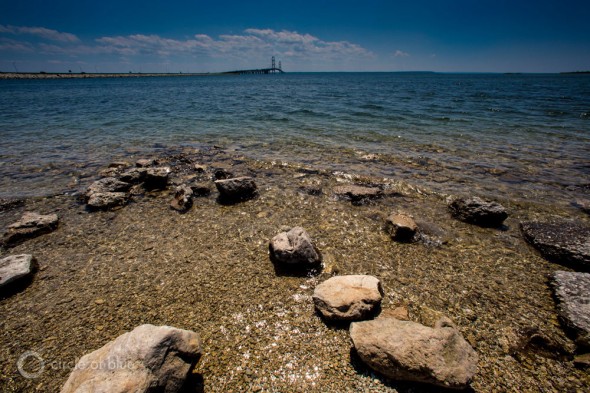
By Miranda Cawley
Circle of Blue
The Great Lakes Petroleum Pipeline Task Force, a high-level state panel, is poised to release a long-awaited report on the safety of Line 5, a 62-year-old pipeline that transports up to 540,000 barrels of oil a day across a deep, 8-kilometer-wide (5-mile-wide) strait at the top of Lake Michigan.
The report from the year-long task force — convened by Michigan’s attorney general and the state’s director of the Department of Environmental Quality (DEQ) — is expected to reveal new facts about the oil pipeline’s design, operations, and maintenance, as well as make recommendations on state responsibility and oversight. Other members of the task force are the Michigan Public Service Commission, Michigan Department of Natural Resources (DNR), Michigan Office of the Great Lakes, Michigan Department of Transportation (MDOT), and the Emergency Management and Homeland Security Division of the Michigan State Police.
The release of the panel’s report will add new depth to an escalating public debate over the risks and benefits of operating an aging oil pipeline in a pristine freshwater environment at the center of the Great Lakes.
“We have an obligation to do all we can to protect public health and the environment in Michigan,” said DEQ director Dan Wyant in a statement in June 2014, when the task force was established. “People around the state have expressed concern about pipelines, and we want to make appropriate information available to the public about the energy infrastructure network beneath our feet. This task force is assembled to respond to those concerns and shed some overdue light on key issues.”
Line 5 snakes from North Dakota through the Upper Peninsula of Michigan, crosses the Straits of Mackinac, and ends up at a refinery in Sarnia, Ontario. Under the straits, the line splits into two pipelines. Originally built in 1953 by Enbridge Inc., a Canadian pipeline operator, the two lines are capable of transporting almost 200 million barrels of crude oil and natural gas liquids a year between western Canada and the United States.
Enbridge operated Line 5 with scant public attention until 2012, when the company disclosed its plan to expand the pipeline’s capacity by 50,000 barrels a day. That year, the National Wildlife Federation released a report that alerted the public to the potential risks to the Great Lakes if there were an oil spill from Line 5 in the straits. The report raised concerns about the aging pipeline’s ability to handle the expanded capacity, as well as Enbridge’s operating safety record.
Just two years earlier, in 2010, another Enbridge pipeline — notably in the same Great Lakes regional pipeline system that includes Line 5 — ruptured in southeastern Michigan and dumped more than 3 million liters (843,000 gallons) of oil into the Kalamazoo River. It was the biggest inland oil spill ever in the United States.
Since 2012, environmental organizations, civic groups, and several members of Congress have joined forces in opposition to the Line 5 expansion. Local protests have drawn large crowds. One demonstration in July 2013, at the place where Line 5 crosses the Straits of Mackinac, featured an address by Bill McKibben, the founder of climate action group 350.org and one of the world’s leading advocates for reducing climate-changing carbon emissions. The Senate’s second-ranking Democrat, Dick Durbin of Illinois, and Michigan senators Carl Levin (D) and Debbie Stabenow (D) sent a letter of concern to the federal Pipeline and Hazardous Materials Safety Administration.
A big spill from Line 5 would be an environmental nightmare, according to a computer-generated simulation produced by the University of Michigan Water Center. The simulation predicted the effects of a 1-million-barrel rupture. The pipeline runs beneath the fast moving waters that join Lake Michigan to Lake Huron. The torrent of water through the straits each day is 10 times what falls over Niagara Falls, and strong currents change quickly and often. According to the simulation, an oil spill would quickly spread throughout the lakes, damaging fisheries and coastal wetlands, engulfing Mackinac Island — one of Michigan’s most popular recreation destinations — and closing public drinking water systems.
Despite the opposition, the expansion project was completed in 2013. Enbridge asserts that it has never experienced a leak or any other serious operational incident on the portion of Line 5 that crosses the straits. The pipeline has leaked on land. The company has unveiled state-of-the-art spill-monitoring systems as part of a full-leak operations plan.
However, state authorities cited the company last year for variances in the pipeline’s construction from state requirements, including fewer pipeline supports at the bottom of the straits than are required under the state agreement reached in the 1950s that allowed Line 5 to cross Lake Michigan. The citation noted that Enbridge planned to install 42 additional support anchors for the pipeline last summer, which would meet the requirement.
Another report released by the National Wildlife Federation focused on the consequences of transporting diluted bitumen — a more corrosive and heavier crude oil product from Alberta, Canada — through the Great Lakes pipeline system. However, a separate report by the National Research Council concluded in 2013 that diluted bitumen does not have an inherently greater spill risk than other heavy crude oils that are shipped by pipeline.
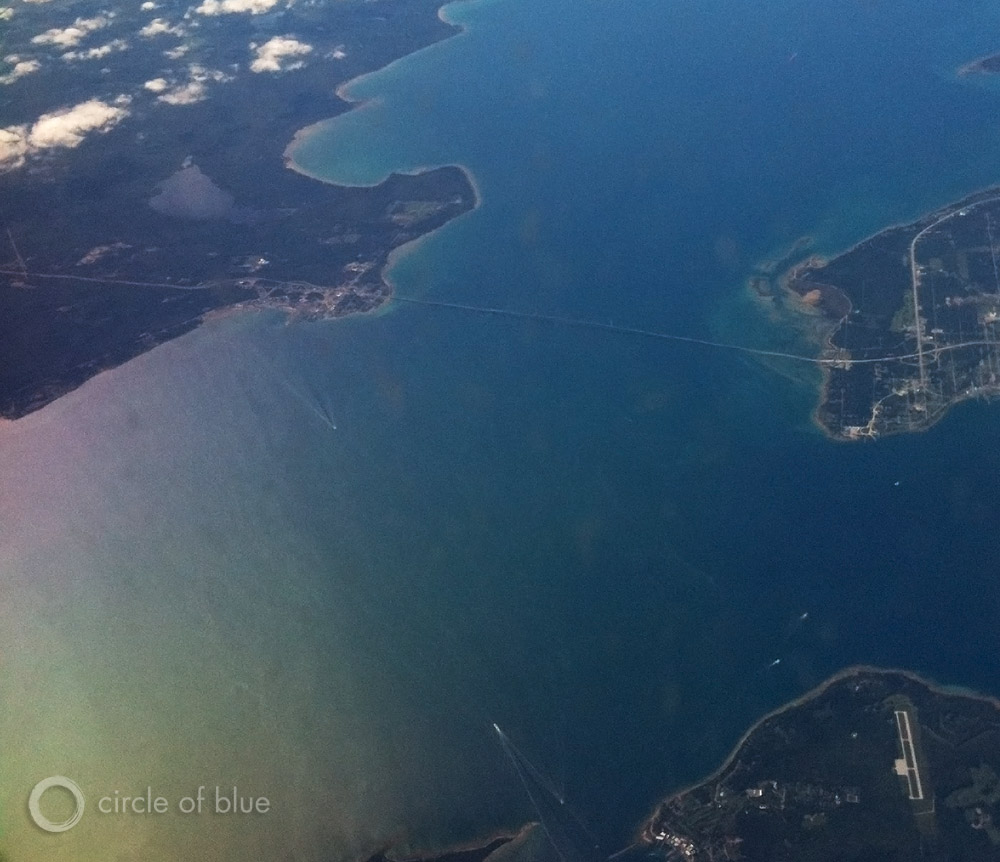
Environmental leaders also argue that Enbridge is in violation of the Great Lakes Submerged Lands Act, which requires the company to release a comprehensive review of the condition of the pipelines.
Most recently FLOW, a Traverse City-based advocacy group, has raised significant issues about the rate of corrosion in the steel pipes based on a technical analysis by a scientist and two engineers who spent their careers with major industrial companies. The team questioned the quality of welds used to build the pipeline and noted that the pipeline is coated with coal tar enamel, an obsolete technology that “has failed elsewhere including in 2009 with Enbridge’s Line 2 near Odessa, Saskatchewan, which was constructed the same year as Enbridge’s Line 5 through the Straits.”
Leaders of six environmental organizations based in Michigan met with the task force in December 2014, and issued an expert recommendation to the task force in April.
Miranda Cawley is a student at Northwestern University’s Medill School of Journalism and a Traverse City-based intern for Circle of Blue. Reach her at mirandacawley@gmail.com by email, @miranda_cawley on Twitter, or comment below.
Circle of Blue provides relevant, reliable, and actionable on-the-ground information about the world’s resource crises.

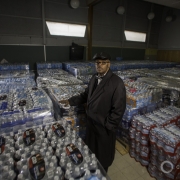
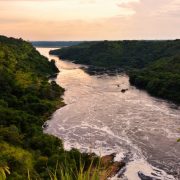
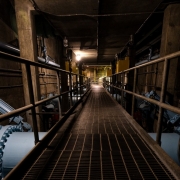





Thank you for this timely article! Two quick corrections:
1. Line 5 is a SINGLE pipeline except where it splits into twin pipeline in the water at the Straits.
2. Enbridge says it has never had a leak on Line 5 IN THE WATER. Since 1988, Enbridge has had 15 documented failures on Line 5, spilling about 260,000 gallons of oil – enough to fill 29 oil tanker trucks – with several of those breaks happening near the Straits, including a pinhole leak north of Manistique. See http://www.oilandwaterdontmix.org/enbridge_safety_record.
so this pair of pipes RECROSS the lakes somewhere near the sarnia refinery correct?
Kelly, thank you for pointing that out. Clarifications have been made.